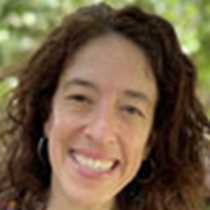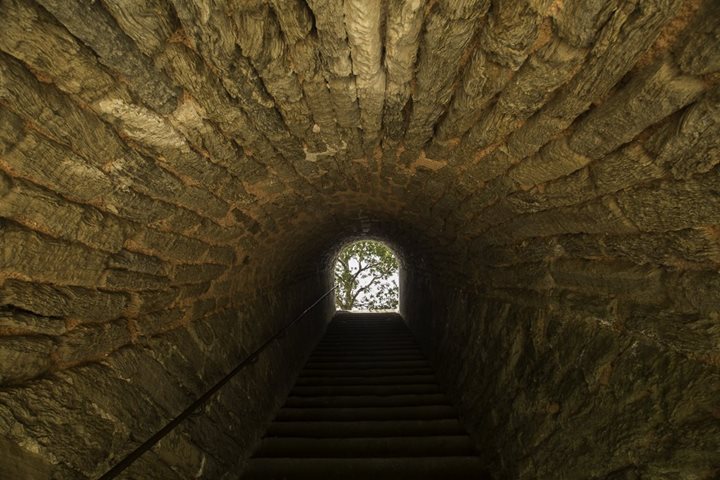France smiled upon us with sunshine for our first full day as we sailed across the English Channel, the smudge of Normandy coastline on the horizon growing more distinct throughout the morning. After breakfast, we were treated to a talk by National Geographic photographer Gianluca Colla, who will be helping us over the next week to be our own best image-makers. While some photographers focus on one type of photo—portraits, say, or wildlife—Gianluca’s are wonderfully varied. His work brings us to the heart of everything, from his family’s warm and lively home in the Swiss mountains, to the cover of National Geographic magazine. In his beautifully illustrated talk, we traveled with nuns sequestered behind a spiky wrought iron fence in Bergamo; mummies (6000 of them!) in a cave in Sicily; and spiders—whose brains, as we learned, age in the same way as the human brain, and whose powerful webs make for stunning photos. One of the most poignant parts of Gianluca’s talk involved his photographs of the working poor—those who, despite working hard every day at grim jobs, cannot meet their basic needs. These moving portraits were images of humanity such as we rarely see.
My own talk followed, entitled simply “French Food.” The topic, however, is anything but simple: French food has a long and distinguished history. We journeyed from one of the earliest known medieval French cookbooks, Le Viandier (The Food Provider) through today’s Michelin Red Guide, whose stars can make or break a restaurant, and the Meilleur Ouvrier de France (MOF, or Best Craftsman in France) competition, whose outcome can make or break a pastry chef! To set us up for eating well in the next seven days (though that’s not exactly difficult on board National Geographic Orion), we discussed the differences between French ways of dining and those of the US. A French meal, and particularly dinner, is a long and exact affair: each of up to eight different courses is served separately, to be best savored. Whereas onboard ship we happily drink our coffee with dessert, in France—never! So our upcoming days will be an immersion into not only French food, but the French culture of dining.
Thus prepared to eat, we repaired to our on board restaurant for a lovely lunch before hopping on shuttles to begin our explorations of France. National Geographic Orion docked for the afternoon at Honfleur, on the Seine estuary. This picturesque and ancient port town and its environs were a favorite among Impressionist artists, including Monet, Corbet, and Boudin. On such a warm and sunny day, it was easy to see the inspiration these painters took from the area, especially for those who joined the hiking excursion to Étretat, with its high cliffs and incredible views over natural stone arches, carved over time by wind and waves. Equally inspiring was the town of Honfleur, for those of us who took the excellent walking tours there. We had the treat of visiting the Musée Eugène Boudin, whose current exhibition, “Etre jeune au temps des impressionnistes, 1860-1920” (“To be young in the time of the impressionists”), showcased many of the incomparable works of the artists who took inspiration here. Some, of course, took the chance to create their own artistic renditions of the area, and joined National Geographic photographer Gianluca Colla and photo instructor David Cothran for a photo walk in town.
As we sailed down the Normandy Coast in the evening, we ended our brilliant day with—of course—more food! Captain Lubo welcomed us at his cocktail party and the talented Chef Lothar followed that by treating us all to a magnificent dinner.







